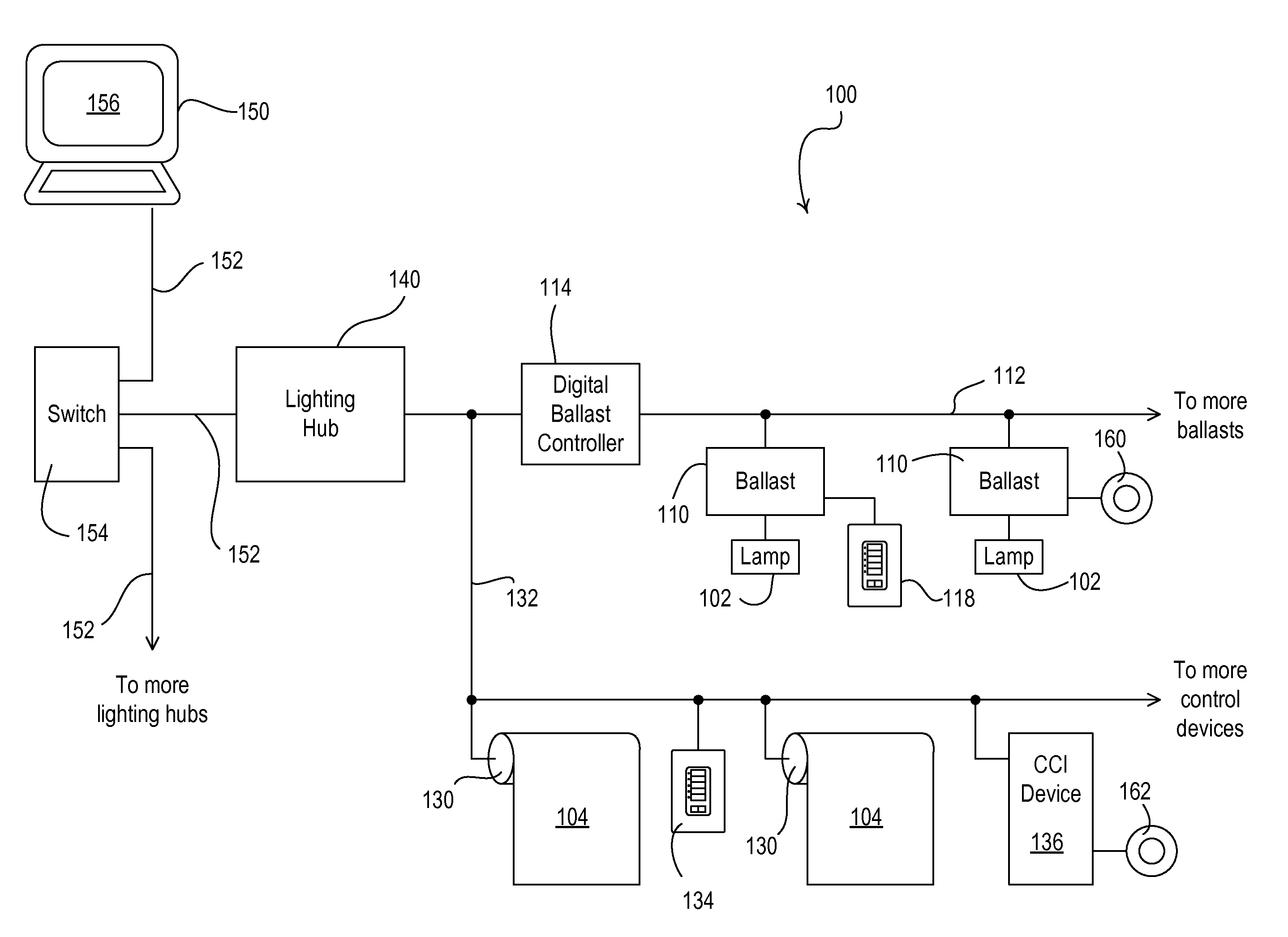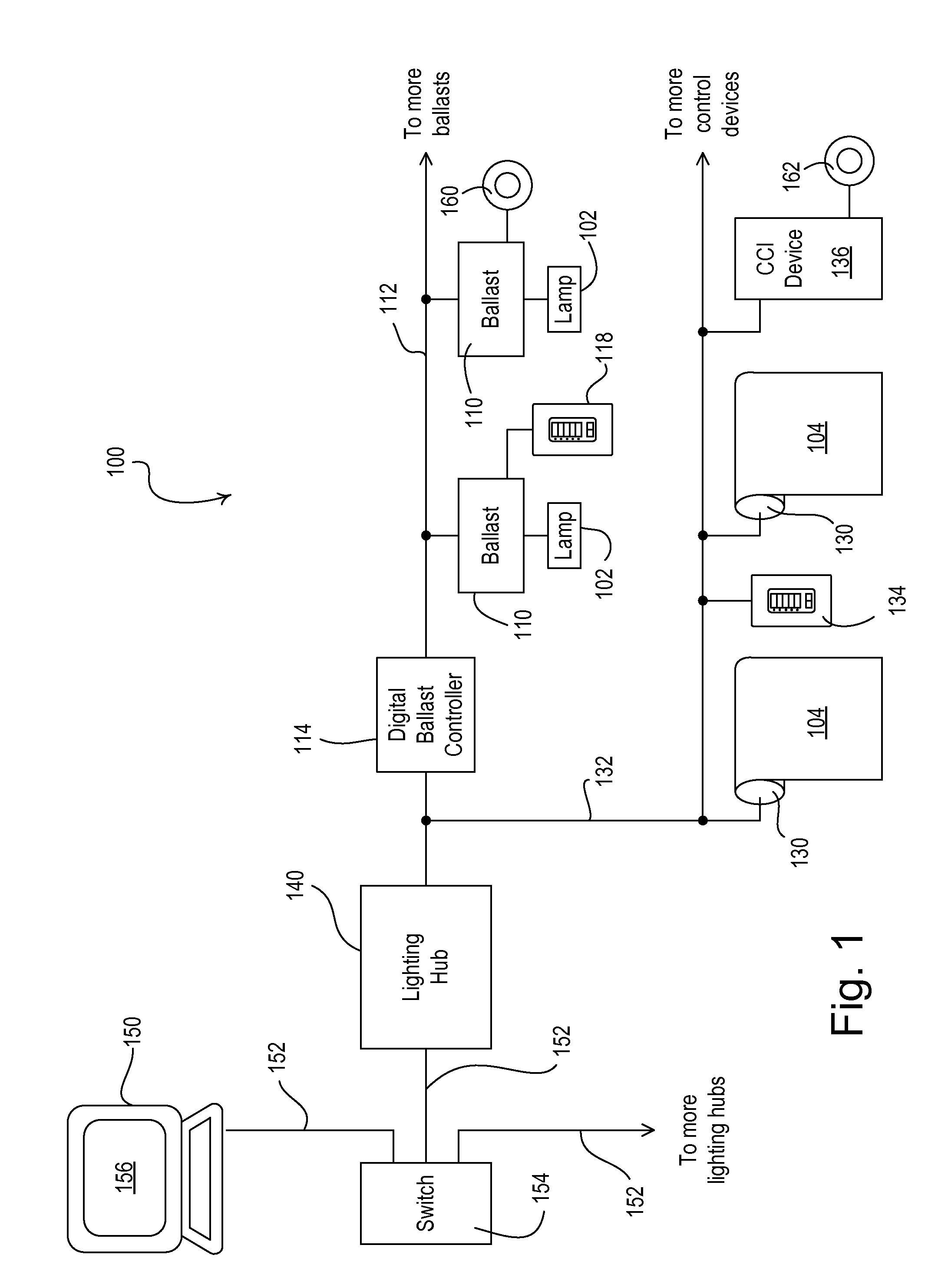Multi-Modal Load Control System Having Occupancy Sensing
a multi-modal, occupancy sensing technology, applied in the direction of electric variable regulation, process and machine control, instruments, etc., can solve the problem of undesirable requirement to manually actuate the keypad buttons to keep the lights on
- Summary
- Abstract
- Description
- Claims
- Application Information
AI Technical Summary
Benefits of technology
Problems solved by technology
Method used
Image
Examples
first embodiment
[0028]FIG. 1 is a simplified block diagram of a load control system 100, which may be installed in, for example, a commercial building, according to the present invention. The load control system 100 is operable to control the amount of power delivered from an alternating-current (AC) power source (not shown) to a plurality of electrical loads. Specifically, the load control system 100 is operable to control the level of illumination in a space of the building by controlling the intensity level of the electrical lights in the space and the daylight entering the space. As shown in FIG. 1, the load control system 100 is operable to control the amount of power delivered to (and thus the intensity of) a plurality of lighting loads, e.g., a plurality of fluorescent lamps 102. The load control system 100 is further operable to control the position of a plurality of motorized window treatments, e.g., motorized roller shades 104, to control the amount of daylight entering the space. Example...
second embodiment
[0041]FIG. 4 is a simple diagram of a radio-frequency (RF) lighting control system 400 comprising a dimmer switch 410 and two remote wireless, battery-powered sensors 420 according to the present invention. The dimmer switch 410 is adapted to be coupled in series electrical connection between an AC power source 402 and a lighting load 404 for controlling the amount of power delivered to the lighting load. The dimmer switch 410 may be adapted to be wall-mounted in a standard electrical wallbox. Alternatively, the dimmer switch 410 could be implemented as a table-top load control device. The dimmer switch 410 comprises a faceplate 412, a toggle actuator 414 (i.e., a button), and an intensity adjustment actuator 416. Actuations of the toggle actuator 414 toggle, i.e., turn off and on, the lighting load 404. Actuations of an upper portion 416A or a lower portion 416B of the intensity adjustment actuator 416 respectively increase or decrease the amount of power delivered to the lighting ...
third embodiment
[0051]According to the present invention, the remote sensor 420 may comprise an astronomical time clock and may transmit different digital messages to the dimmer switch 410 depending upon the present time of the day. Specifically, after sunrise and before sunset (i.e., during the daylight hours), each of the remote sensors 420 transmits a digital message having an “occupied-take-action” command to the dimmer switch 410 in response to detecting an occupancy condition (i.e., the presence of an occupant) in the space. Before sunrise and after sunset (i.e., during the nighttime hours), each of the remote sensors 420 transmits a digital message having an “occupied-no-action” command to the dimmer switch 410 in response to detecting an occupancy condition in the space. During both the daylight hours and the nighttime hours, each of the remote sensors 420 transmits a digital message having a vacant command to the dimmer switch 410 in response to detecting a vacancy condition in the space.
[...
PUM
 Login to View More
Login to View More Abstract
Description
Claims
Application Information
 Login to View More
Login to View More - R&D
- Intellectual Property
- Life Sciences
- Materials
- Tech Scout
- Unparalleled Data Quality
- Higher Quality Content
- 60% Fewer Hallucinations
Browse by: Latest US Patents, China's latest patents, Technical Efficacy Thesaurus, Application Domain, Technology Topic, Popular Technical Reports.
© 2025 PatSnap. All rights reserved.Legal|Privacy policy|Modern Slavery Act Transparency Statement|Sitemap|About US| Contact US: help@patsnap.com



